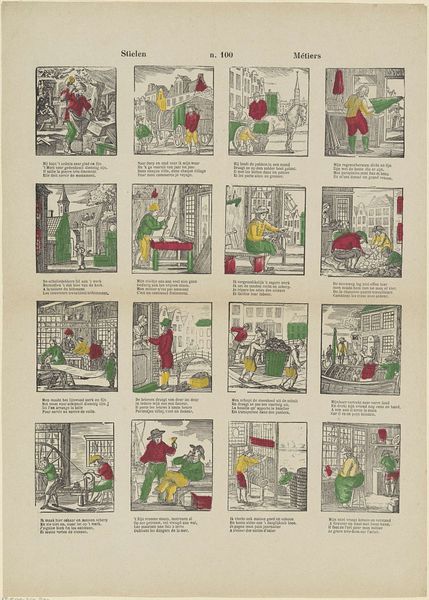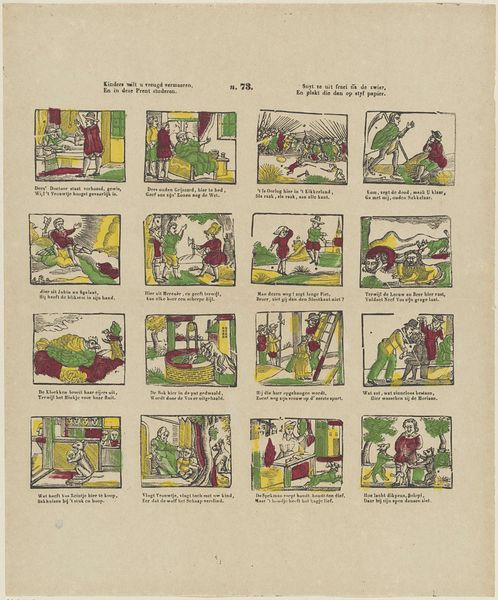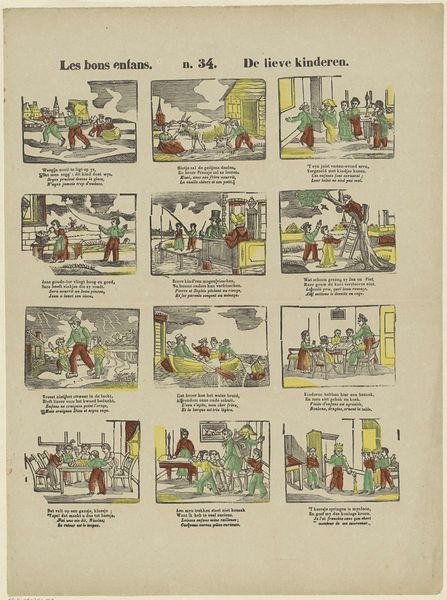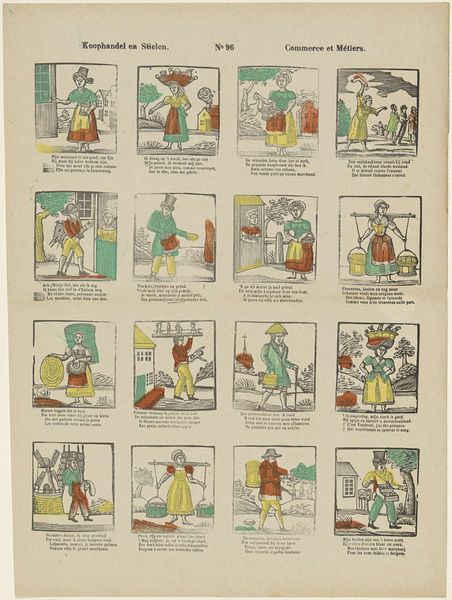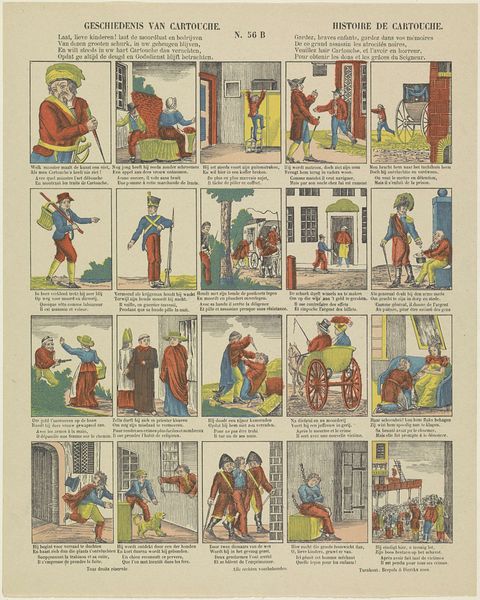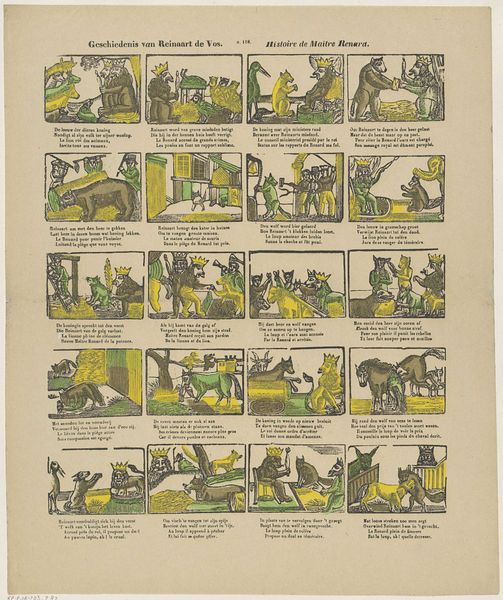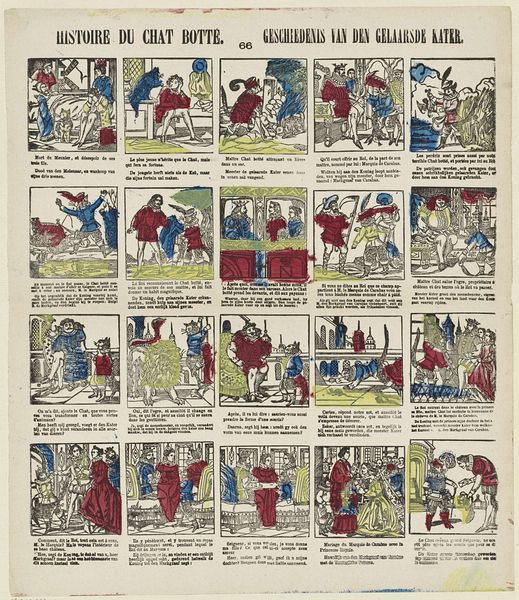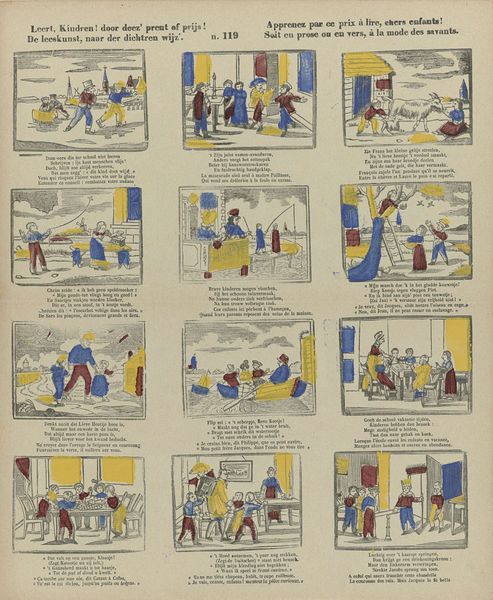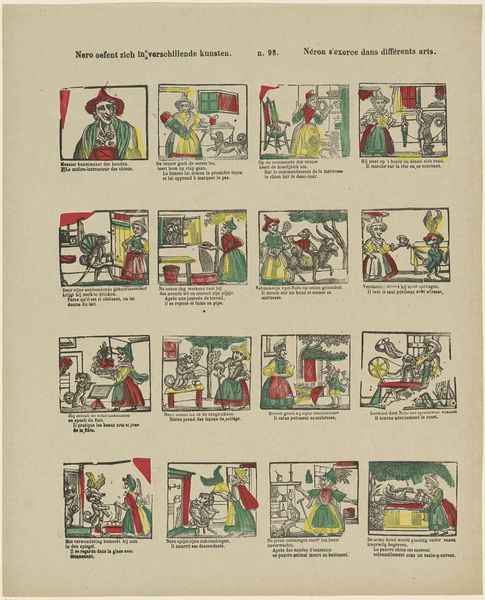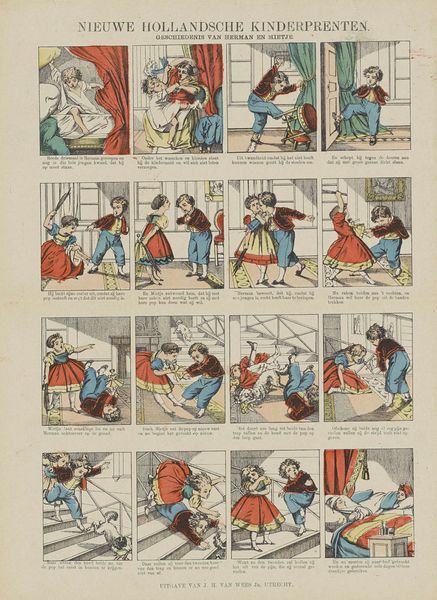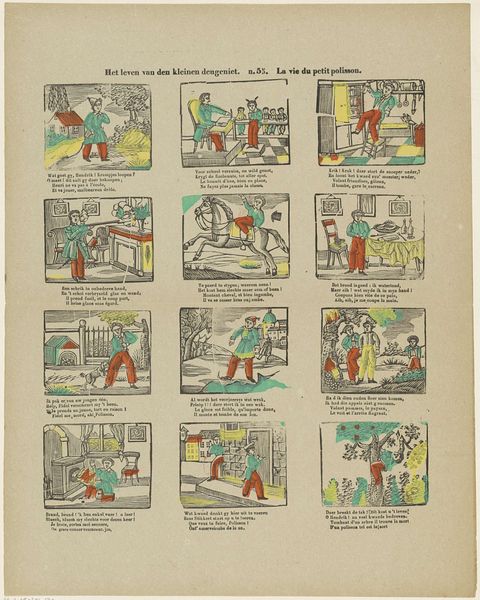
Fridolin ou le page du roi de Portugal / Fridolin of den edelknaep van den koning van Portugael 1856 - 1900
0:00
0:00
#
narrative-art
#
comic strip
# print
#
comic
#
genre-painting
#
history-painting
Dimensions: height 396 mm, width 334 mm
Copyright: Rijks Museum: Open Domain
Curator: We are looking at a printed work from sometime between 1856 and 1900. The title, presented in both French and Dutch, is "Fridolin ou le page du roi de Portugal / Fridolin of den edelknaep van den koning van Portugael.” It seems to tell a sequential story. Editor: Instantly, I’m transported back to childhood comics! The simple lines and limited color palette have this nostalgic, almost medieval feeling. It is visually straightforward in the same way old storytelling tapestries are. Curator: It certainly carries the air of narrative art. The layout, comprised of stacked panels, invites a specific method of reading akin to illuminated manuscripts or even the Bayeux Tapestry. Editor: Each panel really isolates a moment in time. I like the visual compression – almost a haiku for each scene! It reminds me of the ways oral storytelling traditions translate to visual language, distilling narrative essence. Curator: You are on to something with that notion of distillation. These visual stories compress complex moral messages and historical chronicles. This comic format serves a purpose—likely educational and certainly moralizing in tone, targeting wide audiences by condensing narratives. Editor: Absolutely! It would be fascinating to compare it to modern interpretations of similar tales – notice where the morality shifts or if specific symbols change meaning over time. I mean, is this Fridolin a hero, a scapegoat, a bit of both? Curator: Well, in many ways, this piece reflects collective beliefs more than personal interpretation. Cultural narratives ossify meanings that impact societies; tracing these changes, or the roots of ideas through art, reveal our social DNA. Editor: Ah, the art-as-mirror theory. You are so right: these visuals carry such heft beyond the image itself. They are history lessons wrapped in catchy graphics, reflecting norms while subconsciously shaping them too. Curator: Indeed. This type of artwork enables us to peek into the minds and values of those who lived at the intersection of its production and distribution, reflecting what resonated with their communities. Editor: It makes you wonder who was sitting around in the 1800s dissecting images like this one! Food for thought.
Comments
No comments
Be the first to comment and join the conversation on the ultimate creative platform.
